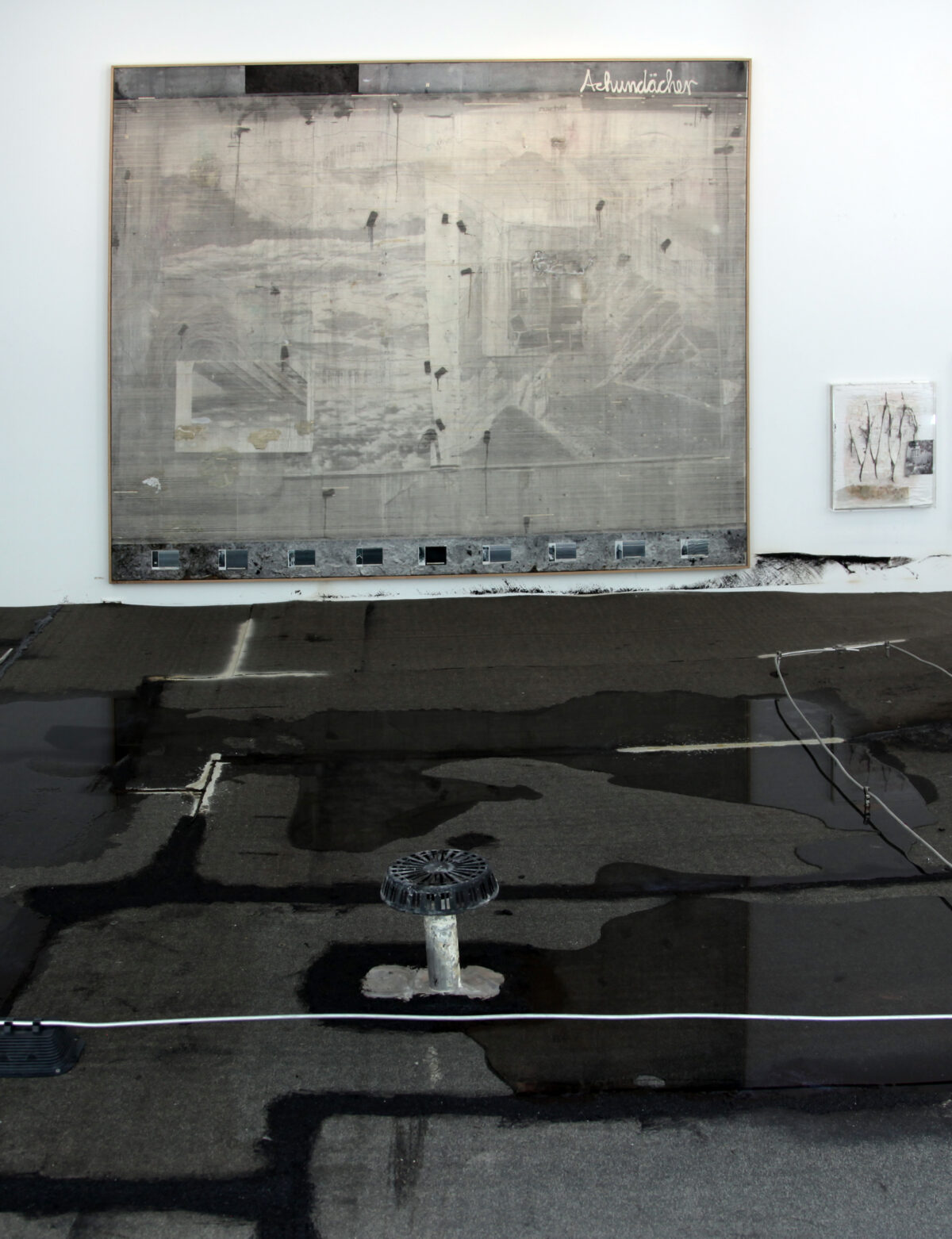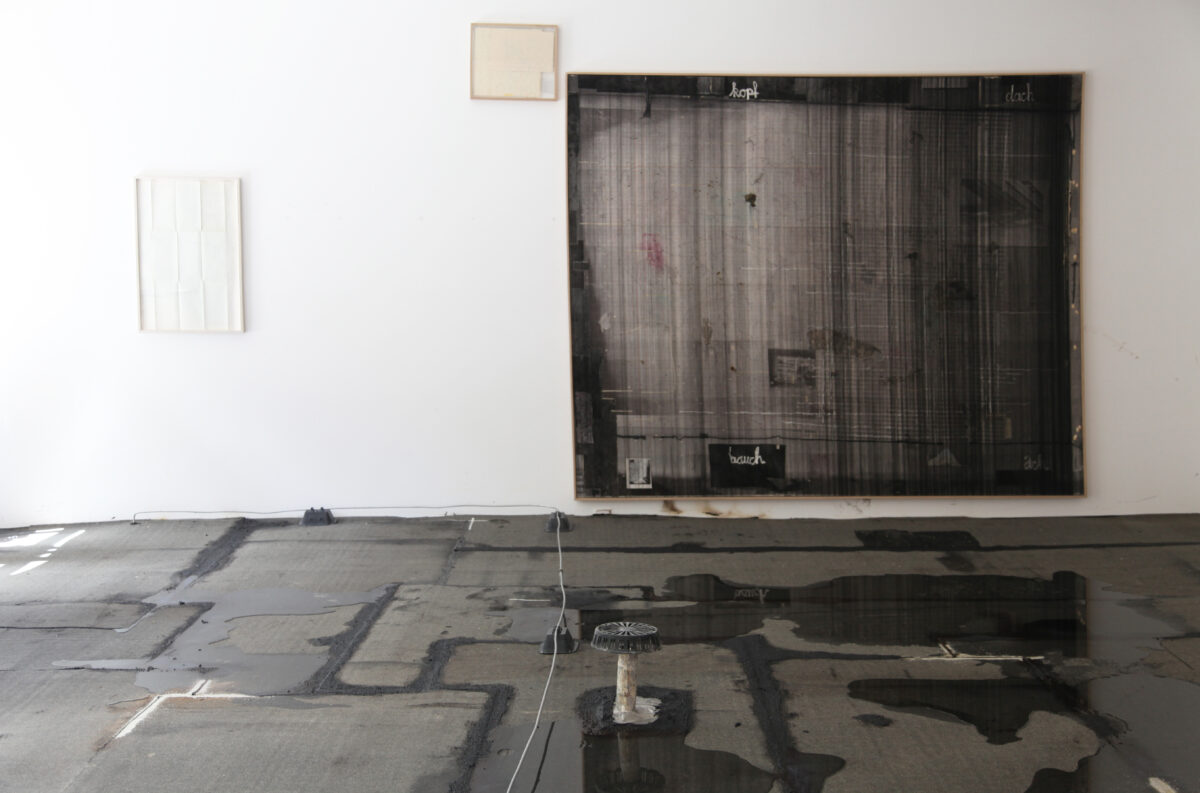Stefan Vogel
Wo der gelbe Fleck ist und das Scheitelhaar liegt, da tut es weh.
Zürich
10.6.–21.8.2022
The Tichy Ocean Foundation is very pleased to present the fourth part of the site-specific installations by Leipzig- based artist Stefan Vogel. After Vogel built four parts of an imaginary house in four different cities, he is now building the culmination of the house in Zurich: a roof for pain. Stefan Vogel builds a house only to move out again immediately.
With the exhibitions „Grrund“ at the Galerie Jahn und Jahn in Munich, „Draussen wird es leiser“ at the Overbeck Gesellschaft in Lübeck, „Relax, it‘s only Paranoia“ at the Kunstsammlung Chemnitz and now „Da wo der gelbe Fleck ist und das scheitelhaar liegt, da tut es weh“ at the Tichy Ocean Foundation in Zurich, Vogel formulates a metaphoric of the house that serves both as an overarching and organizing principle for the four exhibitions and will culminate in an artist‘s book at the end of the cycle.
The house represents an exclusion of the public, it interrupts the views of others through its walls, hedges and fences. At the same time, however, the house also allows glimpses through windows and doors into private space. From the kitchen to the living room, sometimes even the bedroom: one always sets oneself up for foreign glances. In this way, houses and pictures are very similar, because they are both shaped by decisions about what should be invisible and what should be visible. Pictures and houses are also sites of human relationships and conflicts.
The stages of the exhibitions approach different problems of relationships through floors and places of the imaginary house. Thus, „Grrund“ in the form of a „classical“ exhibition formed the outline of the construction of the house as well as the entire project. On display were designs as new flex drawings and silicone images. These were the first material parameters for the other three exhibitions and opened up the problematic field of couple relationships in all respects.
This was followed as a second exhibition in Lübeck by „Ground Floor“, which thematized and represented the threshold between inside and outside, between garden and living room. In a reversal, the exhibition space itself became an outside, while the exhibited „showcases“ opened up an inside. The first floor thus focused on separation, as well as on boundaries and their permeability.
The third exhibition in Chemnitz focused on the great retreat of the house: the cellar. The cellar is both a storage space for objects of memory and a venue for hobbies. Again, in analogy to the production of paintings, the cellar installation in Chemnitz became a breeding ground and studio for the work itself. Here the theme of relationships was extended to the group or community and collaborative works emerged. In a newly created format called „Radiator,“ invitations were extended to „out-of-towners,“ not residents:inside the building . The fourth exhibition at Tichy Ocean in Zurich finally seals the cycle with the roof.
The roof, as the highest point of the imaginary house, is dedicated to the reflection and abstraction of the conflicts that have been played out so far. As an affair of the head, it critically negotiates the establishment of a home, life in romantic relationships of two, and their problematic boundaries and permeabilities. It questions these constellations anew but also conclusively. Human conflicts are transformed here into a map and an abstraction, which, solely due to the difference in height – the bird‘s eye view gained on the roof. The flat roof installed in the exhibition spaces seals the issues raised and at the same time also creates space for something new to grow. Every flat roof is also a fallow land and every fallow land is the ground for something new. To the question of what new can emerge in the attempt to close off the field of conflict of relationships, Stefan Vogel answers promisingly: „I suppose a landscape.“

